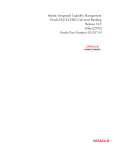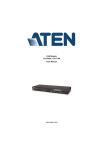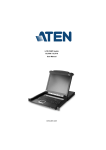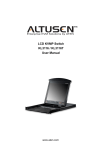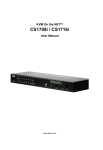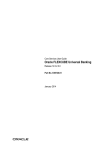Download Integrated Liquidity Management Version
Transcript
Integrated Liquidity Management Version-1.0 9NT1409: ORACLE FCUBS.V.UM.11.0.CN.1.0.0.0 [April] [2010] Oracle Part Number E51708-01 Document Control Author: Documentation Team Group: UBPG Created on: October 01, 2008 Revision No: Final Updated by: Documentation Team Reviewed by: Development/Testing teams Approved by: Software Quality Assurance Team Updated on: April 20, 2010 Reviewed on: April 20, 2010 Approved on: April 20, 2010 Integrated Liquidity Management Table of Contents 1. ABOUT THIS MANUAL................................................................................................................................ 1-1 1.1 INTRODUCTION ........................................................................................................................................... 1-1 1.2 AUDIENCE .................................................................................................................................................. 1-1 1.3 ORGANIZATION .......................................................................................................................................... 1-1 1.3.1 Related Documents ............................................................................................................................ 1-1 1.3.2 Glossary of Icons ............................................................................................................................... 1-1 2. INTEGRATED LIQUIDITY MANAGEMENT - AN INTRODUCTION ................................................. 1-1 2.1 INTRODUCTION ........................................................................................................................................... 1-1 2.2 MAINTAINING PARAMETERS FOR INTEGRATED LIQUIDITY MANAGEMENT ................................................ 1-1 2.2.1 Maintaining Account Classes ............................................................................................................ 1-2 2.2.2 Maintaining Customer Spreads ......................................................................................................... 1-3 2.2.3 Maintaining SDEs.............................................................................................................................. 1-3 2.2.4 Maintaining UDEs............................................................................................................................. 1-4 2.2.5 Creating Interest & Charges Rules.................................................................................................... 1-4 2.2.6 Creating Interest & Charges Products .............................................................................................. 1-5 2.2.7 Maintaining Customers...................................................................................................................... 1-6 2.2.8 Maintaining IC Special Conditions for Customer Accounts.............................................................. 1-7 2.2.9 Maintaining Product Event Class & Accounting Entries .................................................................. 1-8 2.2.10 Associating Branch to Event Class .................................................................................................. 1-11 2.2.11 Group Code Maintenance................................................................................................................ 1-11 2.2.12 Maintaining Third Party Accounts .................................................................................................. 1-14 2.2.13 Maintaining Account Structures ...................................................................................................... 1-16 2.2.14 Closing Accounts in an Account Structure ...................................................................................... 1-19 2.2.15 Creating Group Account Linkages .................................................................................................. 1-20 2.3 OTHER MAINTENANCE ............................................................................................................................. 1-21 2.3.1 Maintaining BIC codes (used in Mirror Account maintenance)...................................................... 1-21 2.3.2 Maintaining Message Media Formats ............................................................................................. 1-22 2.3.3 Maintaining Advise Formats............................................................................................................ 1-22 2.3.4 Maintaining Message Types ............................................................................................................ 1-22 2.3.5 Maintaining STP rules ..................................................................................................................... 1-23 2.3.6 Maintaining STP preferences .......................................................................................................... 1-24 2.3.7 Maintaining Upload Source Preferences......................................................................................... 1-24 2.3.8 Maintaining Retail Teller Settlement Instructions ........................................................................... 1-25 2.3.9 Maintaining Retail Teller Products ................................................................................................. 1-25 2.3.10 Maintaining ARC Details................................................................................................................. 1-26 2.3.11 Mapping Products ........................................................................................................................... 1-26 2.3.12 Maintaining Settlement Instructions ................................................................................................ 1-27 2.3.13 EOD Batch Maintenance Screens.................................................................................................... 1-27 2.3.14 Maintaining Mandatory Program for ILBATCH during End of Transaction input: ....................... 1-28 2.3.15 Maintaining Mandatory Program for ILBATCH during BOD:....................................................... 1-29 2.3.16 Maintaining Mandatory Program for ICEOD during BOD:........................................................... 1-29 2.3.17 Maintaining Mandatory Program for Batch processing ILMBCCC1: ............................................ 1-30 2.3.18 Maintaining Mandatory Program for Batch processing ILMBCCC2: ............................................ 1-30 2.3.19 Maintaining Mandatory Program for Batch processing ILRMJOBS:............................................. 1-31 2.4 IC PROCESSING FOR ACCOUNT STRUCTURES ........................................................................................... 1-31 2.5 INTEGRATED LIQUIDITY MANAGEMENT PROCESSING .............................................................................. 1-32 2.5.1 Validation of Account Structure....................................................................................................... 1-32 2.6 END OF DAY PROCESSING ........................................................................................................................ 1-33 2.6.1 Generating System Accounts............................................................................................................ 1-33 2.6.2 Sweeping and Pooling ..................................................................................................................... 1-34 2.6.3 2.6.4 3. EOD Processing for Sweeps ............................................................................................................ 1-35 Processing for Notional Pooling Structures .................................................................................... 1-35 REPORTS ...................................................................................................................................................... 3-39 3.1 INTRODUCTION ......................................................................................................................................... 3-39 3.2 ACCOUNT STRUCTURE REPORT ................................................................................................................ 3-39 3.2.1 Report Options................................................................................................................................. 3-39 3.2.2 Contents of the Report ..................................................................................................................... 3-40 1. About this Manual 1.1 Introduction This manual is designed to help acquaint you with the Integrated Liquidity Management module of Oracle FLEXCUBE. This manual provides answers to specific features and procedures that you need to be aware of for the module to function successfully. Besides this User Manual, while maintaining the interface related details, you can invoke the context sensitive help available for each field. This help encapsulates the purpose of each field within a screen. Placing the cursor on the relevant field and striking the <F1> key on the keyboard can obtain information specific to a particular field. 1.2 Audience This manual is intended for the following User/User Roles: Role Function Back office data entry Clerks Input functions for maintenance related to the interface. Back office Managers/Officers Authorization functions 1.3 Organization This manual is organized into the following chapters: 1.3.1 Chapter 1 About this Manual gives information on the intended audience. It also lists the various chapters covered in this User Manual. Chapter 2 Integrated Liquidity Management - An Introduction offers an introduction to the module and its features. Chapter 3 Reports gives a detailed account of report generation from this module and the contents of such reports. Related Documents The Procedures User Manual 1.3.2 Glossary of Icons This User Manual may refer to all or some of the following icons: Icons Function New Copy Save 1-1 Delete Unlock Print Close Re-open Reverse Template Roll-over Hold Authorize Liquidate Exit Sign-off Help Add Delete Refer the Procedures User Manual for further details about the icons. 1-2 2. Integrated Liquidity Management - An Introduction 2.1 Introduction Liquidity Management refers to the services your bank provides to its corporate customers thereby allowing them to optimize interest on their checking/current accounts and pool funds from different accounts. Your corporate customers can, therefore, manage the daily liquidity in their business in a consolidated way. Customers need to define ‘account structures’ which form the basis of liquidity management. The account structure reflects the hierarchical relationship of the accounts as well as the corporate strategies in organizing accounts relationships. Liquidity management services are broadly classified as under: • Sweeping - where physical funds are moved in account structure from child to parent or parent to child. • Pooling - where funds are not physically moved in and out of accounts. Instead, the account balances are notionally consolidated and ‘interest computations’ carried out on such notional balances. The Integrated Liquidity Management (ILM) module in Oracle FLEXCUBE supports a multibranch, multi-currency liquidity management structure using architecture of ‘System Accounts’. This enables the system to keep track of balances in accounts in the structure, calculate interest on the accounts in the structure as well as track the history of the sweep/pool structure. System accounts are internal accounts created by the system based on the role played by an account in an Account Structure. This document is broadly classified into two sections as follows Maintenance required for ILM EOD Batch operations and sequence 2.2 Maintaining Parameters for Integrated Liquidity Management You need to maintain certain parameters before you define account structures for integrated liquidity management process. They are: • Account class • Customer Spreads • IC – SDE Maintenance • IC Rule Maintenance • IC Product Maintenance • Customer Maintenance • Customer Account Maintenance • Transaction Code • Product Event class and Accounting entries for ILM 1-1 • ILM Branch parameters Maintenance • Group Code Maintenance • Third-Party Account Maintenance ( if Multi Bank Cash Concentration is implemented) • Account Structure Maintenance • Group Account Linkage • Other Maintenances 2.2.1 Maintaining Account Classes You can use the Account Class feature in Oracle FLEXCUBE to create a set of accounts which have the same characteristics. Click on the ‘Preferences’ button in the ‘Account Class Maintenance’ screen to invoke the ‘Preferences’ screen. You are required to input the following details in this screen: Integrated LM Check this option to indicate that accounts created under this Account Class should be part of an ILM Structure. If the option is checked, the system creates system accounts (internal accounts) for each account that is linked in a pool/sweep structure and tracks the balances on both the actual accounts as well as these system accounts. It also calculates interest on these system accounts. Interest on accounts that are not part of an account structure are calculated on the actual customer account. 1-2 2.2.2 Maintaining Customer Spreads For a given customer and currency pair, you can define buy and sell spreads in different tenors (in days). The system defaults the spread to zero if you have not maintained any spread for a customer. You can maintain spreads for a customer in the ‘Customer Spread Maintenance’ screen. You can invoke the ‘Customer Spread Maintenance’ screen by typing ‘CYDCUSPR’ in the field at the top right corner of the Application tool bar and clicking on the adjoining arrow button. 2.2.3 Maintaining SDEs In order to calculate interest, Oracle FLEXCUBE uses components called ‘data elements’ that provide the required data. System Data Elements (SDEs) are values such as the balance in an account or the number of transactions in a day. This information is constantly updated in the system and is readily available for computation of interest. These values can only be picked up by the system while applying interest. User cannot indicate what the value of an SDE should be. The following SDEs will be used in IC Processing: SDE (System Data Elements) Description ILBD_ULT_DR_BAL Captures the book dated Debit balance of the pool header in this Data element during the IC calculation process ILBD_ULT_CR_BAL System populates the book dated Credit balance of the pool header in this data element during the IC calculation process 1-3 2.2.4 SDE (System Data Elements) Description ILVD_ULT_DR_BAL System populates the value dated Debit balance of the pool header in this data element during the IC calculation process ILVD_ULT_CR_BAL System populates the value dated Credit balance of the pool header in this variable during the IC calculation process ILBD_CP_DR_CONT This data element captures the Compensated contribution of the book dated Debit balance ILBD_CP_CR_CONT This data element captures the Compensated contribution of the book dated Credit balance ILVD_CP_DR_CONT This data element captures the Compensated contribution of the value dated Debit balance ILVD_CP_CR_CONT This data element captures the Compensated contribution of the value dated Credit balance ILBD_NCP_DR_CONT This data element captures the Non Compensated contribution of the book dated Debit balance ILBD_NCP_CR_CONT This data element captures the Non Compensated contribution of the book dated Credit balance ILVD_NCP_DR_CONT This data element captures the Non Compensated contribution of the value dated Debit balance ILVD_NCP_CR_CONT This data element captures the Non Compensated contribution of the value dated Credit balance IL_DR_EFF_RATE This data elements represents the effective Debit interest rate IL_CR_EFF_RATE This data elements represents the effective Credit interest rate Maintaining UDEs User Data Elements (UDEs) are elements (such as Interest or Tax rate) the values for which are provided by the User. The following User Data Elements (UDE) can be specified in IC Rule Maintenance: • Debit Rate for Pool Balance • Credit Rate for Pool Balance • Inter-Bank Rate • Tax Rate 2.2.5 Creating Interest & Charges Rules You can use the SDEs and UDEs that you have previously defined to create formula to be used by the system for interest calculations in the ‘Interest & Charges Rule Maintenance’ screen. You can invoke the ‘Interest & Charges Rule Maintenance’ screen by typing ‘ICDRLMNT’ in the field at the top right corner of the Application tool bar and clicking on the adjoining arrow button. 1-4 You are required to input the following detail in this screen: Integrated LM Choose this option if you want to use the product for Integrated Liquidity Management processing. Integrated LM Type Specify the type of System Account to which the product ought to be linked. It can be: • Pool Leader: Indicates that the Rule will apply to Header accounts in a structure. • Pool Reallocation: Indicates that the rule will apply to Parent and Child Accounts below the Header Account. 2.2.6 Creating Interest & Charges Products You can invoke the ‘Interest And Charges – Interest Product Preferences’ screen by typing ‘ICDPRMNT’ in the field at the top right corner of the Application tool bar and clicking on the adjoining arrow button. 1-5 You can input the following details in this screen: Integrated LM Choose this option if you want to use the product for Integrated Liquidity Management processing. Integrated LM Type Specify the type of System Account to which the product ought to be linked. It can be: • Pool Leader: Indicates that the Rule will apply to Header accounts in a structure. • Pool Reallocation: Indicates that the rule will apply to Parent and Child Accounts below the Header Account. 2.2.7 Maintaining Customers You can invoke the ‘Customer Maintenance’ screen by typing ‘STDCIF’ in the field at the top right corner of the Application tool bar and clicking on the adjoining arrow button. 1-6 Apart from serving as a means to collect basic information about a customer, the ‘Customer Information Maintenance’ screen also reflects the hierarchy existing between a Parent company and its various subsidiaries. The subsidiaries take on the Customer Number of the parent company as their Liability number. 2.2.8 Maintaining IC Special Conditions for Customer Accounts The ‘Customer Accounts Maintenance’ screen is used to create accounts for a given Customer using the desired account class and currency combination. You can invoke the ‘Customer Accounts Maintenance’ screen by typing ‘STDCUSAC’ in the field at the top right corner of the Application tool bar and clicking on the adjoining arrow button. Click Interest tab in Customer Account Maintenance screen to invoke ‘IC Special Conditions Maintenance’ sub-screen, where you can maintain IC special conditions for ILM accounts. 1-7 2.2.8.1 IC Special Conditions The system displays the following fields on the basis of your choice in the IC Rule and IC Product screens. Integrated LM The system defaults the value specified in the product screen from based on product selected from the option list. Integrated LM Type The system displays the value on the basis of your choice in the IC Rule and IC Product screens. 2.2.9 Maintaining Product Event Class & Accounting Entries When you define an Events Class, you choose, first of all, the set of events that would belong to the class. Events are, usually, unique to a module. The events that you would like to include in an Events Class can be identified through the ‘Events Accounting Entries and Advices Class Maintenance’ screen. This screen is invoked from the Application Browser. You can invoke the ‘Events Class Maintenance’ screen by typing ‘CSDACTCL’ in the field at the top right corner of the Application tool bar and clicking on the adjoining arrow button. 1-8 You can maintain the following details in this screen: Class Code An Events Class is identified with a unique Code and a Description. This indicates the name of the event class to which the events for ILM processing will be linked. Description You need to enter a brief description for the class code. Module Events are, usually, unique to a module. Specify the module as IL to define the events for Liquidity Management module. Events Description Once you specify the class code and module, click on add icon. The system will display the events associated with the Integrated Liquidity Management module. The following events are available for the integrated liquidity management module: • SWBK : Sweep Booking • RVSW: Reverse of Sweep Booking • RALL: Reverse ALL (Book / Reverse Sweep) 2.2.9.1 Defining Accounting Entries for Event You can indicate the accounting entries that should be passed at an event in the Accounting Entries section of the ‘Events Class’ screen. This section is invoked by clicking the ’Accounting Entries’ button. 1-9 As part of the Accounting Entry details of an event, you should specify the following details: • The accounting role • The amount tag • If a debit or a credit • The transaction code Accounting Role If accounting entries are to be passed for an event, you have to indicate the different Accounting Roles. At an event in the life cycle of a deal, involving a product to which you associate the class, the appropriate entries will be passed under the specified Accounting Roles. The adjoining option list displays a list of all the available accounting roles. Amount Tag The amount (i.e. the available balance, booking dated balance etc.) that is to be posted for an event, is referred to as the Amount Item. The tag associated with an Amount Item is the Amount Tag. The adjoining option list displays a list of the amount tags that are maintained in the system. You can choose a tag by double clicking on it. Debit/Credit You have already specified the type of account to which an entry should be passed, and the tag which identifies the amount (available balance, booking dated balance etc.) that should be passed. In this field, you must indicate if the amount is to be debited from credited to the specified account. Choose the Debit or Credit indicator. Transaction Codes Every accounting entry in Oracle FLEXCUBE involves a Transaction Code that describes the nature of the entry. This code and its description will identify the original sweep book, reverse booking and their corresponding reversals. The Transaction Code for both legs of the transaction would be the same. The table below illustrates the accounting entries for each event that you need to set up for the liquidity management module. Event Debit/Credit Indicator Accounting Role Amount Tag SWBK DR CHILD CR_CONT SWBK CR PARENT CR_CONT SWBK CR CHILD DR_CONT SWBK DR PARENT DR_CONT RVSW DR PARENT CR_CONT RVSW CR CHILD CR_CONT 1-10 Event Debit/Credit Indicator Accounting Role Amount Tag RVSW DR CHILD DR_CONT RVSW CR PARENT DR_CONT Refer to the Modularity User Manual for further information on setting up accounting details. 2.2.10 Associating Branch to Event Class After you define the accounting entries that need to be passed for a set of events, you need to associate the event accounting entries to the branches of your bank. You can invoke the ‘ILM Branch Parameter Maintenance’ screen by typing ‘ILDBRPRM’ in the field at the top right corner of the Application tool bar and clicking on the adjoining arrow button. You are required to input the following details: Event Class Choose the event class that you wish to associate to the branch. Multi branch ILM structure Check this option to indicate that multi-branch ILM structure is applicable for this branch. In case you wish to modify the option by un-checking it, the system allows it only if there are no existing active groups for the multi-branch. Job Frequency Min Specify the frequency for the processing of MBCC Jobs for a branch. The default value of Jobs Frequency is 30. 2.2.11 Group Code Maintenance In Oracle FLEXCUBE, you can bring together several accounts to form a ‘Group’ for ILM processing. You can then link this group code to the Header Account maintained as part of Account Structure. In Oracle FLEXCUBE, group codes allow you to uniquely identify a given account structure for ILM processing. 1-11 You can invoke the ‘IL Group Code Maintenance’ screen by typing ‘ILDGRPCD’ in the field at the top right corner of the Application tool bar and clicking on the adjoining arrow button. You can input the following details in this screen: Group Code and Description Enter a unique code to identify the group code in the system. Enter a brief description. Effective Date Specify the date from which the group will become active in the system. You will not be allowed to input Back Valued Dates (BVT) here. Sweep Basis You need to indicate if the sweep should be performed on Book Dated balance or Value Dated Balance for the entire structure falling under the group. . If BVT support is required, it must have ‘Value Dated’ option. Pool Benefit If you select this option, interest re-allocation is carried out for the child accounts involved in the group. Reverse Sweep Indicate whether reverse sweeps should be performed during BOD batch. BVT Applicable Specify if BVT processing is applicable for a group BVT Unit Indicate the unit the system should consider while calculating the BVT date. This can be Days/Months 1-12 BVT Duration This indicates the number of BVT units allowed as back period from today’s date while calculating BVT date. For instance, to indicate 30 Days input ‘Days’ as BVT Unit and ‘30’ in the BVT Duration fields. Similarly, to indicate 2 months, the BVT Unit should be ‘Months’ and the BVT Duration ‘2’. Note the following: • If the Sweep basis is Book Dated, back value dated transaction is not allowed. • While maintaining a new Group, the system will validate whether the ILM Applicable option is checked in the ‘ILM Branch Parameters’ screen. 2.2.11.1 A Note on Back Valued Transactions The system rebooks the sweeps (in case of physical pooling) and adjusts the interest amount that had been accrued and settled in the accounts when you input a transaction with a back value date. In case of a change in the Account Structure in the interim between the Back Value Transaction (BVT) date and current date, the system uses the account structure existing on the execution days. The following points need to be kept in mind for BVT Processing: • It is performed only for sweeps and pools which are value based. • The corresponding System Account active on the Effective Date is considered for a back valued transaction to an account. (If BVT falls on a holiday then BVT is considered only from the next working day, as there will not be any value dated record in system account for holidays) • The processing involves replaying the sweep from the least date of the BVT which means that the Contributions and Pool Balances of the System Accounts are calculated afresh. The balances in all accounts of the structure are reworked and the sweeps carried out again for each of the previous sweep having the same value date. • The value dated balances of the Parent Account as well as the Child Accounts in the Account Structure are updated • In Customer Account Statements, only the back value transaction will be available on the date that it was posted. The system follows the following process for replaying sweeps: 1. It omits BOD processing for the least back value date only and continues till the current processing date. It then identifies the value dated balance of the current processing date for the corresponding System Account and carries out the EOD processing. 2. For a particular Effective Date, it calculates Sweep Amount for the corresponding System Accounts. 3. It fetches the entry posted for the BVT date from the Sweep Log and compares it with the Sweep Amount that has been calculated currently. 4. If the Sweep Amounts are equal, no entry is posted. 5. If the Sweep Amounts are different, it reverses the entry that was posted for the BVT date (SWBK) and the corresponding entry that was used during BOD to reverse the entry above Reverse sweep booking (RSBK) 1-13 6. Reversal of Reverse Sweep (RSWR) entry gets posted during reversal of RVSW. 7. It inputs a new entry whose booking date is the processing date of the BVT and whose value date is the BVT date. This entry is entered into the Daily Log. 8. It then updates the post sweep balances for a combination of Account + Effective Date + System Account. Every time a physical sweep is executed, the system stores the credit balance and the unused OD limit in the Parent Account before and after the sweep. 2.2.12 Maintaining Third Party Accounts A Third Party Account is an account which is located in another bank which is not part of your bank, but is part of the Liquidity Management Account Structure maintained with your bank. The funds can be moved from or to the Third Party accounts. To establish a relationship between the accounts in Oracle FLEXCUBE and the third party accounts, you first need to maintain a mirror account of such accounts as normal CASA accounts in Oracle FLEXCUBE and then capture the parameters of the Third Party Accounts in the ‘Mirror Accounts Maintenance’ Screen. The Mirror accounts can be created at your branch in the country where the Third Party Account is located/your branch in the country where the Header account of the Group is located. The funds to be moved to/from the Third Party Account will be routed through this CASA account. The Mirror Account will be used to capture parameters for message generation. The balance information obtained from the Third Party Bank will be stored in the Mirror Account. The Third Party Account details are maintained in the ‘Third Party Accounts Maintenance’ screen. You can invoke the ‘Third Party Accounts Maintenance’ screen by typing ‘ILDMIRAC’ in the field at the top right corner of the Application tool bar and clicking on the adjoining arrow button. 1-14 You need to maintain the following parameters in this screen: Mirror A/c This indicates the account number in Oracle FLEXCUBE. External A/c You need to indicate the account number in the third party bank. Currency The system defaults the account currency. Technical A/c This indicates the CASA account linked to the mirror account. Location This indicates the location of the third party bank. BIC Indicate the BIC Code of the third party bank. Route Code Specify the route code based on which the system will pick up the settlement instructions from ARC settlement instructions maintenance for third party accounts, for the generation of payment messages. Account Current Balance The system will display the balance of the external account sent by the last MT 942 message. Balance Update On The system displays the date on which the last MT942 message was received. Start Time MT920 Here, indicate the time at which the first MT920 message for a day should be generated. End Time MT920 You need to specify the time at which the last MT920 message for a day should be generated. MT920 Generation Frequency Here you need to indicate the interval (in hours) at which MT920 should be generated. Cutoff Time MT101 You need to indicate the time at which MT101 should be generated for sweeping in funds from the Third Party Account. 1-15 Cutoff Time MT103 You need to indicate the time at which MT103 should be generated for sweeping out funds from the Parent Account. 2.2.13 Maintaining Account Structures In Oracle FLEXCUBE, you can define a structure for the various accounts participating in the ILM process and set up a hierarchy for the accounts - establish the relationships or links among the accounts that are to be part of the Group. You need to define the account structure and the hierarchy for ILM processing in the ‘Account Structure Maintenance’ screen. You can invoke the ‘Account Structure Maintenance’ screen by typing ‘ILDSWEEP’ in the field at the top right corner of the Application tool bar and clicking on the adjoining arrow button. You can define the following parameters as part of maintaining the account structure for ILM processing: 2.2.13.1 Indicating Account Details Specify the following details. Third Party Account If the account that you have specified is a mirror account of an account held with another bank, you need to indicate it by selecting this option. If you select this option, the system will allow you to select the Technical CASA account that is linked as part of Third Party Accounts Maintenance. 1-16 Account First, you need to specify the account (main or affiliate account) which has to be part of the account structure. Account Type You need to indicate whether the account that you have specified is a main account or secondary account. The account type defines the relationship between the accounts. • Select the option ‘Parent’ to indicate that the account is the main account in the hierarchy. • Select the option ‘Child’ to indicate that the account is a secondary account in the hierarchy. You will not be able to link the accounts at the same level in an account structure. If you de-link a parent account from a structure or link it to another parent in the same structure, the associated child accounts linked to it will also follow the parent account. Effective Date You need to indicate the date from which the account structure is available in the system for ILM processing. However, if Intraday Sweep Batch is run for the branch for any group, you cannot change the structure on the same effective date. Parent Account This is applicable only if you are maintaining a child account. You need to indicate the parent account for the child here. You cannot link a child account to more than one parent account. Booking Account You need to indicate the account to which the interest amount is to be booked during interest reallocation (after interest is calculated). The booking account linked to the account should have the same currency as the account. Scheme Indicate the type of structure for which the link is being defined. The following types are possible: • Sweep: Indicates that the level of the structure is Sweep, in which movement of funds is physical. • Pool: Indicates that the level of the structure is Pool, in which movement of funds is notional. Note the following: • You can maintain Pool Structure only for a single level • You cannot have maintain a Sweep structure on top of a pool structure Interest Reallocation Check this option to allow interest to be re-allocated to this account. 1-17 2.2.13.2 Maintaining Sweeping Parameters Specify the following details. Sweep Type This indicates the sweep type of the parent and child account. The sweep type can be either of the following: • Debit (Sweep Out) • Credit (Sweep In) • Target Balance Agreement Base Amount The amount depends on the sweep type that you have selected. • If the sweep type is Debit, the Amount indicates the balance in the account that should trigger a sweep out of funds. The sweep transaction will be executed if the balance in the account becomes greater than this amount. • If the sweep type is Credit, the Amount indicates the balance in the account that should trigger a sweep in of funds. The sweep transaction will be executed if the balance in the account goes below this amount. • If the sweep type is Target Balance, the Amount indicates the minimum balance that is to be left behind in the Child Account after the sweep is performed. A value of zero indicates Zero Balancing sweeps. Multiples Amount This indicates the multiples amount in which the system performs sweeps. Example: Let us assume the following: • Available amount in account: 900 • Base Amount: 100 • Multiples amount: 250 In this case, the system works out the amount to be swept as follows: 900 – ((mod (900 – 100) / 250) + 100) 900 – (50 + 100) = 750 2.2.13.3 Indicating Pooling Parameters Specify the following details. Rate Type This indicates the exchange rate type that would be used by the system to convert child account balances to the currency of the parent account. The system will not allow you to specify the rate type if you have specified the scheme as ‘Sweep’ as the system supports only single currency sweeps. Spread Indicator Specify which spread will be applicable - Mid or Buy/Sell. The system default value is ‘Mid’. 1-18 If you choose the ‘Buy/Sell’ option, the system applies the ‘Buy’ rate when debiting the customer account and the ‘Sell’ rate when crediting the customer account. After defining the account structure, you can modify it as well as the Header Account linkages. You can also move accounts from one structure to another and if the account being moved is a Parent Account, all the child accounts associated with it are moved to the new structure. However, you cannot make a back-value dated change to an Account Structure. Every change in an Account Structure or a Group–Account linkage leads to the creation of new System Accounts for the accounts in the Group. This results in the system closing the existing System Account for the accounts. But the closed records are retained to enable the system to track the history of the Account Structure and are stored based on their ‘Effective Dates’. 2.2.14 Closing Accounts in an Account Structure The following steps explain how to close an account in a given account structure. Let us assume that, in the structure shown below, we need to close account P2 and attach account C2 directly to H1. The steps to be followed for the closure are: • Child Account C2 is closed first (You can query to find out the child accounts of a given parent account, say P2 ) • Subsequently, account P2 is closed. • Account C2 is now freshly linked with H1. 1-19 After the structure change has been carried out, the new structure appears as shown below: In the new structure (i.e. after the change), account C2 will have a new ‘System Account’ associated with it. BVT is not applicable for a group if any of the account structure closes and BVT falls in that period. 2.2.15 Creating Group Account Linkages You can link the account structure to the group codes that you have maintained in the ’Account Group Linkage Maintenance’ screen. You can invoke the ’Account Group Linkage Maintenance’ screen by typing ‘ILDGRPLN’ in the field at the top right corner of the Application tool bar and clicking on the adjoining arrow button. In this screen, you need to specify the following: Header Account The system will display the parent accounts maintained as part of account structure maintenance. Select the account which you want to link to the group. 1-20 Effective Date Indicate the date on which the structure under the group should come into effect. Group Code Indicate the group code to which you want to link the account structure. For example, the following structure may be defined for a Group Code ‘GRP’ HACC (Header Account) -- PACC1 (Child to HACC) -- CACC1 (Child to PACC1) -- PACC2 (Child to HACC) -- CACC2 (Child to PACC2) -- CACC3 (Child to PACC2) In the above structure, PACC2 is the Child Account in the link HACC – PACC2 whereas Parent Account in PACC2 – CACC2. 2.3 Other Maintenance Apart from the maintenances mentioned in previous sections, if Multi Bank Cash Concentration facility is allowed, the following maintenances need to be done during implementation. This is necessary only if they have not been maintained earlier. 2.3.1 Maintaining BIC codes (used in Mirror Account maintenance) You can invoke the ‘BIC Code Details’ screen by typing ‘ISDBICDI’ in the field at the top right corner of the Application tool bar and clicking on the adjoining arrow button. 1-21 2.3.2 Maintaining Message Media Formats You can invoke the ‘Message Media format Maintenance’ screen by typing ‘MSDMSFMT’ in the field at the top right corner of the Application tool bar and clicking on the adjoining arrow button. 2.3.3 Maintaining Advise Formats You can invoke the ‘Advise Format Maintenance’ screen by typing ‘MSDADVFT’ in the field at the top right corner of the Application tool bar and clicking on the adjoining arrow button. 2.3.4 Maintaining Message Types You can invoke the ‘Message Type Maintenance’ screen by typing ‘MSDMSTYP’ in the field at the top right corner of the Application tool bar and clicking on the adjoining arrow button. 1-22 2.3.5 Maintaining STP rules You can invoke the ‘STP Rule Maintenance’ screen by typing ‘MSDMTUDF’ in the field at the top right corner of the Application tool bar and clicking on the adjoining arrow button. 1-23 2.3.6 Maintaining STP preferences You can invoke the ‘STP Preferences Maintenance’ screen by typing ‘MSDSTPRF’ in the field at the top right corner of the Application tool bar and clicking on the adjoining arrow button. 2.3.7 Maintaining Upload Source Preferences You can invoke the ‘Upload Source Preferences Maintenance’ screen by typing ‘CODUPLDM’ in the field at the top right corner of the Application tool bar and clicking on the adjoining arrow button. 1-24 2.3.8 Maintaining Retail Teller Settlement Instructions You can invoke the ‘Retail Teller Settlement Details Maintenance’ screen by typing ‘FTDRCST’ in the field at the top right corner of the Application tool bar and clicking on the adjoining arrow button. 2.3.9 Maintaining Retail Teller Products You can invoke the ‘Retail Teller Product Maintenance’ screen by typing ‘DEDRTPRM’ in the field at the top right corner of the Application tool bar and clicking on the adjoining arrow button. 1-25 2.3.10 Maintaining ARC Details You can invoke the ‘ARC Maintenance’ screen by typing ‘IFDATMMN’ in the field at the top right corner of the Application tool bar and clicking on the adjoining arrow button. 2.3.11 Mapping Products You can invoke the ‘Message Product Mapping Maintenance’ screen by typing ‘MSDPRMAP’ in the field at the top right corner of the Application tool bar and clicking on the adjoining arrow button. 1-26 2.3.12 Maintaining Settlement Instructions You can invoke the ‘Settlement Instruction Maintenance’ screen by typing ‘ISDINSTR’ in the field at the top right corner of the Application tool bar and clicking on the adjoining arrow button. 2.3.13 EOD Batch Maintenance Screens You are required to maintain the following sequence for ILM batches that need to be run, for any branch which is enabled for ILM. At EOTI – Stage • ILRMJOBS • ILBATCH • ICEOD At BOD - Stage • ILBATCH • ICEOD • ILMBCCC1 • ILMBCCC2 The various mandatory programs are show below: 1-27 2.3.14 Maintaining Mandatory Program for ILBATCH during End of Transaction input: 2.3.14.1 Maintaining Mandatory Program for ICEOD during End of Transaction input: 1-28 IC batch should run only if ILBATCH is successful. Hence, in ICEOD mandatory program, you need to maintain the field predecessor as ILBATCH so that the IC Batch will not run if ILBATCH fails. 2.3.15 Maintaining Mandatory Program for ILBATCH during BOD: 2.3.16 Maintaining Mandatory Program for ICEOD during BOD: 1-29 2.3.17 Maintaining Mandatory Program for Batch processing ILMBCCC1: 2.3.18 Maintaining Mandatory Program for Batch processing ILMBCCC2: 1-30 2.3.19 Maintaining Mandatory Program for Batch processing ILRMJOBS: 2.4 IC Processing for Account Structures Interest resolution for customer accounts with non-integrated LM IC products is carried out by the system at the time of saving the accounts. In the case of customer accounts with integrated LM type of IC product, System Account records for the customer accounts are created after the account structure has been maintained. The system accounts are created on the basis of their account type (Header and Reallocation) and are resolved in a similar manner to customer accounts. The following points need to be considered for IC processing: • The Header Account is identified on the basis of system account level • Details of dates for liquidation/ accrual/ calculation and previous liquidation for the various ILM type products linked to a customer account are stored when a new system account is created. • The Account Type of the System Account and the ILM type of formula determine how interest is computed and if the accounting entries for accrual or liquidation should be suppressed or not. • The re-allocation interest is computed on the basis of the respective IC condition that is associated with each System Account Type. This is based on Child Account’s contribution to the Parent Account. • Value dated contribution of the Child Account to/from the Parent Account is kept track of • The interest amount for the System Accounts can be calculated by checking the ‘Pool Benefit’ box at the Group level. 1-31 A change in UDE values does not impact the resolution of System Accounts since both the UDEs and the UDE values are taken from the corresponding Customer Account of each System Account. The UDE values are maintained in the Node and the same is picked up for interest calculation. If the UDE values are changed for an effective date, the IC calculations will be based on the new UDE value as on that effective date. A back valued change in a UDE value leads to a back valuation for the following: • The relevant System Account and the corresponding subsequent System Accounts • The Pool System Accounts to which the UDE belonged to as of the UDE effective date till date. For ILM type of products, the Balance SDEs used for the calculation of the Pool System Accounts are the consolidated pool balance and for the System Accounts it is the System Accounts independent balances. For non ILM type of products the balances are taken from the customer accounts. The System Account interests which are affected by BVT are recalculated and will be compared with the interest posted during that period. The adjustment entry to the System Account will be the difference of interest computed and interest posted. The adjustment entry due to BVT is maintained in the corresponding Booking Account of the System Account maintained in the Account Structure Maintenance. If the interest calculated cannot be posted due to the closure of the booking account maintained for the System Account in the Account Structure, then the system will post the interest entry to the suspense account maintained. The System Accounts considered for calculation are those which: • belong to the current period, • belong to the last period, and • are enabled for BVT (back value transaction) processing The reallocation of interest depends on the interest conditions (based on the Value Dated Sweep Amounts) set up on the Child Accounts. The system obtains the interest rates for calculating reallocation interest from the UDEs specified in IC Maintenances. The interest so derived on the contribution of the child accounts is re-allocated to the respective child accounts. 2.5 Integrated Liquidity Management Processing The subsequent sections of this chapter explains the various processes (real time, intra day and end of day) performed by the system as part of ILM processing. 2.5.1 Validation of Account Structure The system automatically validates the account structure that you have maintained. You can run this batch process anytime during the day to check the validity of account structures. If you have modified the account structure details, you need to manually run the validation. The system will execute the validation batch as part of ILM Processing (Intra-day or End of Day) for all account structures which have not been validated. 1-32 2.6 End of Day Processing 2.6.1 Generating System Accounts An account can play the role of child or parent in an account structure. For this purpose (and to help in the processing of corrections such as back value dated transactions), Oracle FLEXCUBE creates system accounts. This helps the system to identify the role of the account in a structure at any point of time. The resolution for generation of system accounts is as follows: • The system identifies all the active groups in the branch to which the accounts are linked in Account Structure Maintenance. The system also identifies all the accounts in the Account Structure. • The system identifies the ultimate parent account or Header Account linked to the group in a structure creates System Accounts for the given structure. The system accounts are created for every account. • The system assigns level called System Account level apart from the level of the account in the structure that you have maintained. For instance, in the illustration explained under the section ‘Linking Account Structure to Group Code’, the Account Structure for the Group GRP is maintained as: Child Account Parent Account IL Relation HACC GRP C HACC HACC P PACC1 HACC C PACC2 HACC C PACC1 PACC1 P PACC2 PACC2 P CACC1 PACC1 C CACC2 PACC2 C CACC3 PACC2 C The System Account is created for the above mentioned Account Structure as follows: Account IL Relation As System Account Account Level System Account Level HACC Parent T3 2 1 HACC Header T4 2 2 1-33 Account IL Relation As System Account Account Level System Account Level PACC1 Child T1 2 3 PACC2 Child T2 2 3 PACC1 Parent S3 3 1 PACC1 Header S4 3 2 PACC2 Parent S6 3 1 PACC2 Header S7 3 2 CACC1 Child S1 3 3 CACC2 Child S2 3 3 CACC3 Child S5 3 3 • The System Account will have the same account Class, currency and customer ID as that of the customer account. • The attributes defined in the Account Structure Maintenance are carried forward for the corresponding System Accounts. 2.6.2 Sweeping and Pooling During End of Day (EOD) process, you can execute the sweep process for integrated liquidity management. When you execute this process, based on your specifications, funds are swept between accounts in a structure. That is: • In a multi-tiered sweep structure, sweeps of a lower level will be done before the sweeps of a higher level. • System identifies the level of the System Accounts and the contribution of each account to its respective Pool is calculated. This information is stored at the Account + System Account + Effective Date level. • For Notional Pooling structures, the system consolidates balances of all accounts that are part of the Notional Pooling structure and calculates the pool balance. • For sweeping structures, system will also post accounting entries as follows: Dr Contributing Account Cr Receiving Account Amount Amount • The value date and posting date for the entries will be the date on which the sweep is actually executed. • If a sweep cannot be executed because of any reason, the system stores the information for reporting. 1-34 2.6.3 EOD Processing for Sweeps All sweeps will be single currency sweeps. During EOD: • Based on the choice of ‘Sweep Type’, the system will process as follows: ¾ ¾ ¾ Sweep In: The minimum balance to be maintained in the Child Account is considered as ‘Amount’. This sweep will be affected only if the account balance at EOD falls below this number. The funds will be swept into the child account from the parent. Sweep Out: The maximum balance to be maintained in the child account is considered as the ‘Amount’. This sweep will be affected only if the account balance at EOD is above this number. The funds will be swept out the child account to the parent. Target Balance: The Target Balance for the Child Account is considered as the ‘Amount’. The funds will be moved in or out of the child account in order to maintain the Target balance at EOD. • System will perform the sweep only if there are sufficient funds in the parent account to perform the sweep. • Credit balance in the account as well as unused OD limit in the parent account would be treated as balance available for sweeping (if you have chosen the option ‘OD Limit Available’ for the Parent Account). • The system will reverse the sweeps for which the ‘Reversal’ option has been selected. 2.6.4 Processing for Notional Pooling Structures The processing for Notional Pooling structures is as follows: • In case of Notional Pooling (NP) funds are actually not moved across accounts. However, the value dated balances of the Child accounts are kept track of. • Notional Pooling is performed only for a single level. A single level NP structure can be defined above a multi level sweeping structure. • Notional Pooling is an EOD process where system consolidates balances of all accounts that are part of the NP structure and calculates the Pool Balance. • The system converts the Child Account balances to Parent Account currency. This is done in order to arrive at the ultimate Pool Balance in terms of the Parent Account currency. 2.7 Processing Entrust Loan Accounts Entrust means to give over (something) to another for care, protection, or performance. The Corporate or Entities maintain entrust accounts with the Banks. As per Chinese regulation, balance in entrust account should not go negative at the End of Day (EOD) and there should always be funds in the member accounts to cover the payments. Oracle FLEXCUBE checks the cumulative balance of all the member accounts mapped to entrust account before allowing a payment to be made from a current account if the funds are not available for payment. The system ensures all the outgoing payments are debited from each entity’s account via the following sequence: 1. Current Account 2. Entrust Loan Account 3. Overdraft Account (only if required, followed by approval from the bank) 1-35 Before releasing the pending payments, if there are insufficient funds in the Current Account to cover all outgoing payments, the system will proceed to change the debit account the Current Account to the Entrust Loan Account. The system throws appropriate warning or override messages seeking confirmation whether it should proceed to debit the Current Account while considering the below factors: • Whether the Current Account is mapped to an Entrust Account. • Whether the cumulative balance of all member accounts of an Entrust account is sufficient to cover the payment amount. While releasing each payment from the Entrust Loan Account, the system will take a group balance position and limit check. If surplus funds are available at the group level to cover the payments, the system releases the payments from the Entrust Loan Account. If the system detects that the group funds are insufficient, then no payments will be released from any of the entities Entrust Loan Accounts. Thereby at the end of the sweep process, the entire group will be either a zero balance or a surplus position as required by current regulations. If the balance after the transaction is not sufficient to cover the balances of the other entrustment accounts in the group, the system throws appropriate warning or override messages showing the balances of the entrustment accounts and disallowing the debit. If there are any pending payments to be released after the overall group's liquidity have been utilized, the system proceeds to change the debit account from the Entrust Loan Account to the Overdraft Account. 2.7.1 Capturing Entrust Loan Account Details For maintaining entrust loan cash management services, you have to invoke the ‘Entrust Account Details’ screen. To invoke the screen from the Application Browse, select Entrust Details under Liquidity Management and then select Detailed under it. You can also invoke this screen by typing ‘CMDENTLN’ in the field at the top right corner of the Application tool bar and clicking on the adjoining arrow button. 1-36 The following details are captured in this screen: Customer Select the appropriate liability number from the adjoining option list. Parent Check this option to identify the maintenance is for a group level entity. If you try to maintain a concentration account for a parent account, the system will throw an error message. Current Account Select the Current account of the customer from the adjoining option list. Entrustment Account Select the appropriate Entrustment Account of the customer from the adjoining option list. Overdraft Account Select the appropriate Overdraft Account of the customer from the adjoining option list. Concentration Account Select the appropriate Concentration Account of the customer from the adjoining option list. Entrust Account Limit The system displays entrustment account limit for the account. This limit is maintained the first time an account is maintained and the same will be set as default next time onwards. Current Branch The system displays current branch code for the account. Entrust Branch The system displays entrust branch code for the account. Overdraft Branch The system displays overdraft branch code for the account. Concentration Branch The system displays concentration branch code for the account. For any transaction, the system carries out the following basic check: • The balance of the child current account(s) +parent current account(s) +concentration account should be sufficient to cover the balance of the entrustment account during EOD. • This check would be applicable even in case the current account has sufficient balance to cover a transaction. 1-37 Note the following: • The system does not consider cut-off times. • The system does not consider queuing for accounts where payments have failed because of insufficient funds in Current Account. • During EOD, the system will transfer the funds from the Current Account associated with Entrustment Account, if the balance is insufficient to cover up Entrustment Account balance then the system will transfer outstanding amount from the Concentration Account. • During BOD, the system moves the funds back from the individual entrustment accounts to the concentration account. • The Entrust Account is treated as a zero balance account with an available intraday overdraft facility. • The Entrustment Account, Current Account, Concentration Account and Over Draft Account are in the same currency and in same branch. • The system will validate the entrustment account, current account, concentration account and Over Draft account to ensure it has the same liability ID. 1-38 3. Reports 3.1 Introduction Reports provide details of various events in the life of a specific contract, or across contracts at a specific point of time. For every module in Oracle FLEXCUBE, you can generate reports. This chapter details out the reports that you can generate from Integrated Liquidity Management module of Oracle FLEXCUBE. You can generate the following report for the Integrated Liquidity Management module: • Account Structure Report 3.2 Account Structure Report Account structure report provides information on the type of account and effective date of each account. You can set preferences as to generation of the report using ‘Account Structure Report’ screen. To invoke the screen, type ‘ILRTQURY’ in the field at the top right corner of the Application tool bar and click the adjoining arrow button. 3.2.1 Report Options You can set your preferences for report generation on this screen. Group Code Specify the group code for which you are generating the report. The option list displays all valid group codes maintained in the system. Choose the appropriate one. Once you have specified the group code, click OK button. The system displays the print option screen. Here, you can set your preferences as to printing the report. Click OK button to print the report. 3-39 3.2.2 Contents of the Report The contents of Account Structure report have been discussed under the following heads: Header The ‘Header’ carries the title of the report, branch code, branch date, user ID, module from which the report has been generated, date and time at which the report has been generated and the page number of the report. Body You can find the following details in the body of the report: Branch Code The code that identifies the branch Account The account number for which the corresponding details are provided Account Type The type of corresponding account Effective Date The effective date of the corresponding account 3-40 Integrated Liquidity Management [April] [2010] Version 1.0 Oracle Corporation World Headquarters 500 Oracle Parkway Redwood Shores, CA 94065 U.S.A. Worldwide Inquiries: Phone: +1.650.506.7000 Fax: +1.650.506.7200 www.oracle.com/ financial_services/ Copyright © [2010] Oracle Financial Services Software Limited. All rights reserved. No part of this work may be reproduced, stored in a retrieval system, adopted or transmitted in any form or by any means, electronic, mechanical, photographic, graphic, optic recording or otherwise, translated in any language or computer language, without the prior written permission of Oracle Financial Services Software Limited. Due care has been taken to make this document and accompanying software package as accurate as possible. However, Oracle Financial Services Software Limited makes no representation or warranties with respect to the contents hereof and shall not be responsible for any loss or damage caused to the user by the direct or indirect use of this document and the accompanying Software System. Furthermore, Oracle Financial Services Software Limited reserves the right to alter, modify or otherwise change in any manner the content hereof, without obligation of Oracle Financial Services Software Limited to notify any person of such revision or changes. All company and product names are trademarks of the respective companies with which they are associated.



















































